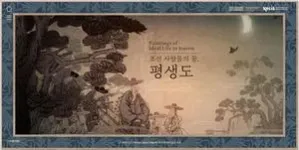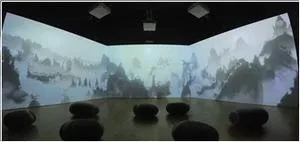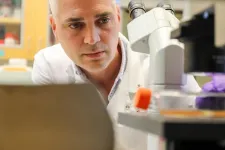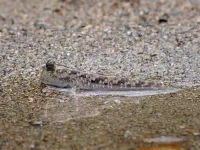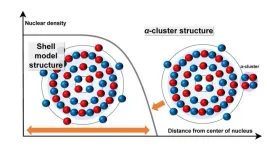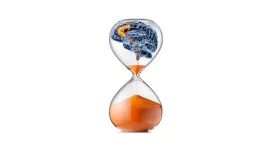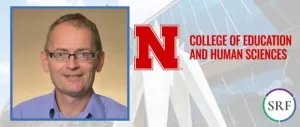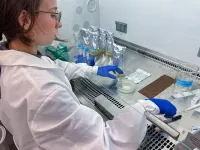(Press-News.org) South Korean researchers are revitalizing the nation's world-class cultural heritage through digital transformation. By collaborating with museums, they are bringing the rich history and culture of Korea to life using AI-based technology development.
Since 2020, the Electronics and Telecommunications Research Institute (ETRI) and the National Museum of Korea have been working together under a Ministry of Culture, Sports and Tourism R&D project to develop and demonstrate key technologies for the digital transformation of Korean cultural heritage.
The two institutions have been applying AI technology to enhance the quality and usability of museum data, and they have been promoting research on foundational technologies and the development of an intelligent heritage platform that manages and utilizes new types of data in various environments and for different purposes.
ETRI has focused on AI-based data analysis and standardization of cultural heritage. Notable efforts include:
- Data fabric-based archives1)
1) Data Fabric Based Archives: Technology that connects and provides access to relevant data anytime, anywhere, based on AI.
- AI-based cultural heritage analysis2)
2) AI-Based Cultural Heritage Analysis: Technology for analyzing cultural heritage data and automatically generating metadata.
- Digital heritage standards3)
3) Digital Heritage Standards: Standards for the comprehensive utilization of increasing digital cultural heritage data.
- Generative AI-based data expansion4)
4) Generative AI-Based Data Expansion: Technology supporting the generation of required resolutions, qualities, and styles for content and devices.
- Sharing platforms for various demands5)
5) Sharing Platforms for Various Demands: Platform technology that can support purposes such as preservation, exhibition, education, and management.
Using these technologies, the research team has been striving to create an intelligent digital heritage sharing platform to support:
- Museum artifact management
- Cultural heritage preservation research
- Immersive content creation
- Interactive cultural heritage education
The developing digital heritage sharing platform uses data fabric technology based on AI, enabling immediate utilization of the diverse forms of digital cultural heritage data continuously increasing in museums, aiming for the world’s top-class usability.
Globally, attempts to enhance the value and usability of cultural heritage by integrating digital and AI technologies are increasing. However, museums often find it challenging to have a practical platform integrating these technologies due to the complexity and specific needs of digital heritage.
Around the world, experts in cultural heritage and digital technology are collaborating, yet significant trial and error occurs due to differences in experience and knowledge, along with issues related to data structure, usability limitations, and conflicts with museum processes.
In this context, developing and applying the new platform to the work of the National Museum of Korea staff is considered crucial in advancing South Korea's leadership in the digital transformation of cultural heritage.
Moreover, a digital standard process for storing and utilizing high-quality digital cultural heritage data, generated and utilized by new technologies annually, is being completed in collaboration with museums, a world-first achievement.
This digital heritage standard process guarantees the availability of data not only for existing cultural heritage but also for various applications like virtual reality, digital twin, and the metaverse. This transformation allows museums to become proprietors of their data, adapting it into various forms.
Data produced through the standard process creates a foundation for the highest level of cultural heritage, usable in exhibitions, preservation, education, and more. In the digital age, we can expect strategic digital incursions and unfounded claims from certain countries aiming to advance their own interests. Particularly during such times, it is crucial for nations to strive to secure the digital scalability of their cultural heritage. Thus, the completion of a comprehensive digital standards process holds significant importance.
Through four years of joint efforts, ETRI and the National Museum of Korea have established a high-quality digitalization process for cultural heritage, which includes sharing and spreading this process to affiliated research institutes, related industries, and academic institutions such as Technology Research Institute for Culture & Heritage, LiST Co., Ltd., Chung-Ang University, and Korea National University of Cultural Heritage.
Using the digital standard technology developed last year, ETRI, the National Museum of Korea, and the Technology Research Institute for Culture & heritage have created digital content of the National Treasure “Pensive Bodhisattva” at the Millennium Hall of Incheon International Airport Terminal 1. This work won the public branding category of the German IF Design Award, one of the world's top three design awards, last year.
Additionally, the “Pyeongsaengdo” content of the National Museum of Korea, which implements world-class high-quality cultural heritage content, won the Red Dot Award last year.
The research team has utilized ultra-high-resolution digital asset data for the digital “Gwanggaeto Stele” content in the main lobby of the National Museum of Korea, “The Path of History.” In addition, the Korea Heritage Service co-exhibited cultural heritage immersive content using ‘Chilbo Sando Folding Screen’ with the Cleveland Museum of Art in the U.S., showcasing the world's top-level digitalization of cultural heritage based on the developed technology.
The foundation of these achievements lies in the followings:
- Improving the quality of cultural heritage digital data
- Developing technology for visualizing cultural heritage networks
- Text mining technology for generating knowledge-based cultural heritage relationships
This includes research on developing AI technologies specialized for cultural heritage and studies on the creation and utilization of cultural heritage assets.
The collaboration model between the two institutions addresses digital cultural heritage data utilization and field issues in areas like preservation, exhibition, education, archives, and open storage.
Complete digital transformation will be achieved when a platform is built that allows broad searchability and easy utilization and sharing of cultural heritage information and data within people's lives.
ETRI, together with the National Museum of Korea, has advanced numerous cutting-edge studies, including:
- Cultural property database modeling
- AI-based automatic digital conversion of traditional cultural heritage data
- Standardization research on ultra-high-resolution digital cultural heritage assets
Tae-hee Lee, a researcher at the National Museum of Korea, said, “We expect that the long-term collaboration between these two leading institutions in cultural heritage and advanced technology will set the stage for developing AI technology and application models usable in the specialized field of Korean cultural heritage.”
Jae-Ho Lee, the head researcher at ETRI's Content Convergence Research Section, added, “The numerous digital projects on cultural heritage data at the National Museum of Korea can be considered the starting point of South Korea's digital transformation. Both institutions have prepared for the digitalization of heritage-related information, such as descriptions of each cultural property, related materials, and relationships with other heritage items.”
ETRI explained that their new challenge this year in the data fabric field is innovative and promising, offering a positive opportunity to secure international technological competitiveness in the era of digital transformation.
###
This technology has achieved results as part of the Ministry of Culture, Sports and Tourism's project, “Development of Intelligent Heritage Sharing Platform Technology Leading Digital Standards for Cultural Heritage.”
About Electronics and Telecommunications Research Institute (ETRI)
ETRI is a non-profit government-funded research institute. Since its foundation in 1976, ETRI, a global ICT research institute, has been making its immense effort to provide Korea a remarkable growth in the field of ICT industry. ETRI delivers Korea as one of the top ICT nations in the World, by unceasingly developing world’s first and best technologies.
END
ETRI breathes digital life into cultural heritage
Leading cooperation with the National Museum of Korea for digital transformation of world-class cultural heritage. Development and demonstration of an intelligent platform combining AI and cultural heritage digitization.
2024-07-19
ELSE PRESS RELEASES FROM THIS DATE:
These healthcare professionals may be secret weapon against hypertension, study says
2024-07-19
When it comes to helping patients with high blood pressure get their hypertension under control, a new Tulane University study finds that pharmacists and community health workers have the best success rates.
The study, published in Circulation: Cardiovascular Quality and Outcomes, analyzed data from 100 hypertension trials around the world and compared blood pressure reductions by the type of healthcare professionals who led the interventions.
While interventions led by nurses, physicians and multiple healthcare professionals still significantly reduced blood pressure for patients, pharmacists achieved the greatest improvements, followed ...
New humidity-driven membrane to remove carbon dioxide from the air
2024-07-19
Direct air capture was identified as one of the ‘Seven chemical separations to change the world’. This is because although carbon dioxide is the main contributor to climate change (we release ~40 billion tons into the atmosphere every year), separating carbon dioxide from air is very challenging due to its dilute concentration (~0.04%).
Prof Ian Metcalfe, Royal Academy of Engineering Chair in Emerging Technologies in the School of Engineering, Newcastle University, UK, and lead investigator states, “Dilute ...
Study shows promise for a universal influenza vaccine
2024-07-19
New research led by Oregon Health & Science University reveals a promising approach to developing a universal influenza vaccine — a so-called “one and done” vaccine that confers lifetime immunity against an evolving virus.
The study, published today in the journal Nature Communications, tested an OHSU-developed vaccine platform against the virus considered most likely to trigger the next pandemic.
Researchers reported the vaccine generated a robust immune response in nonhuman primates that were exposed ...
To walk, you only need fins (and maybe a sense of adventure)
2024-07-19
Okinawa’s mangrove forests are home to many animal species, from crabs to kingfishers; they host a diverse ecosystem teeming with life. Among the quirkier residents living there is “Minami-Tobihaze” — the barred mudskipper. “They are fish, but they can walk and live partly on land,” says Dr. Fabienne Ziadi-Künzli from the Nonlinear and Non-equilibrium Physics Unit, who is the first author of a study on mudskipper anatomy, which was recently published in the Journal of Anatomy.
Adapting to a new life
The barred mudskipper, scientifically called Periophthalmus argentilineatus, has more than just one oddity. Their eyes ...
Come closer: titanium-48’s nuclear structure changes when observed at varying distances
2024-07-19
The world around us is made up of particles invisible to the naked eye, but physicists continue to gain insights into this mysterious realm. Findings published in Physical Review C by Osaka Metropolitan University researchers show that the nuclear structure of an atom likely changes depending on the distance the protons and neutrons are from the center of the nucleus.
OMU graduate student Maito Okada, Associate Professor Wataru Horiuchi, and Professor Naoyuki Itagaki from the Graduate School of Science compared calculations using theoretical models with existing experimental data to determine whether titanium-48, the most common isotope of titanium with 22 protons and 26 neutrons, ...
Good timing: UNLV study unravels how our brains track time
2024-07-19
Ever hear the old adage that time flies when you’re having fun? A new study by a team of UNLV researchers suggests that there’s a lot of truth to the trope.
Many people think of their brains as being intrinsically synced to the man-made clocks on their electronic devices, counting time in very specific, minute-by-minute increments. But the study, published this month in the latest issue of the peer-reviewed Cell Press journal Current Biology, showed that our brains don’t work that way.
By analyzing changes in brain activity patterns, the research team ...
Positive and negative impacts of interfacial hydrogen bonds on photocatalytic hydrogen evolution
2024-07-19
Photocatalytic hydrogen evolution from water is a key technology for achieving sustainable hydrogen production. However, the direct impact of the microscopic structure of interfacial water molecules on photocatalytic reactivity remains unexplored. In this study, the crucial roles of interfacial hydrogen bond structure and dynamics, as well as the optimal interfacial water environment for promoting H2 evolution were uncovered. These findings provide molecular-level insights that can guide the design of interfacial water conditions to enhance photocatalytic performance.
Hydrogen production via photocatalytic water splitting is a sustainable ...
SynGAP Research Fund (SRF) continues support for exosome research for SYNGAP1-Related Disorders (SRD) in the lab of Professor Janos Zempleni of the University of Nebraska-Lincoln
2024-07-19
Mill Valley, CA – July 10, 2024 – The SynGAP Research Fund 501(c)(3) announces a $190,636 grant, for work to be done in 2024 and 2025, to Professor Janos Zempleni, PhD of the University of Nebraska-Lincoln, to establish data required for regulatory approval for his novel treatment using an engineered version of naturally-occurring particles called exosomes. His first grant from SRF established the engineered changes required to accumulate exosomes in the brain. SRF is pleased to support the continued development of a non-invasive and targeted delivery system for therapeutics ...
Food research fellowships funded for scientists in 6 countries
2024-07-19
DALLAS, July 18, 2024 — Diet-related diseases account for 1 in 5 deaths around the world[1] and unsustainable industrial agricultural practices threaten to compromise the health of the planet.[2] While emerging science expands our knowledge of food composition, society still understands little about the tens of thousands of components found in food.
The American Heart Association is facilitating a new research fellowship program from the Periodic Table of Food Initiative (PTFI) with support from The Rockefeller Foundation. The program, called Good Food Fellows, aims to train a new ...
Illinois studies explore converting wastewater to fertilizer with fungal treatment
2024-07-19
URBANA, Ill. – Creating fertilizers from organic waste can help reduce the consumption of fossil fuels and promote sustainable production. One way of doing this is through hydrothermal liquefaction (HTL), which converts biomass into biocrude oil through a high-temperature, high-pressure process. Two studies from the University of Illinois Urbana-Champaign explore the use of a fungal treatment to convert the leftover wastewater into fertilizer for agricultural crops.
“HTL uses wet biomass from organic sources such as swine manure or food waste. The process yields wastewater, called hydrothermal liquefaction aqueous phase (HTL-AP), which is usually discarded. We ...
LAST 30 PRESS RELEASES:
First Editorial of 2026: Resisting AI slop
Joint ground- and space-based observations reveal Saturn-mass rogue planet
Inheritable genetic variant offers protection against blood cancer risk and progression
Pigs settled Pacific islands alongside early human voyagers
A Coral reef’s daily pulse reshapes microbes in surrounding waters
EAST Tokamak experiments exceed plasma density limit, offering new approach to fusion ignition
Groundbreaking discovery reveals Africa’s oldest cremation pyre and complex ritual practices
First breathing ‘lung-on-chip’ developed using genetically identical cells
How people moved pigs across the Pacific
Interaction of climate change and human activity and its impact on plant diversity in Qinghai-Tibet plateau
From addressing uncertainty to national strategy: an interpretation of Professor Lim Siong Guan’s views
Clinical trials on AI language model use in digestive healthcare
Scientists improve robotic visual–inertial trajectory localization accuracy using cross-modal interaction and selection techniques
Correlation between cancer cachexia and immune-related adverse events in HCC
Human adipose tissue: a new source for functional organoids
Metro lines double as freight highways during off-peak hours, Beijing study shows
Biomedical functions and applications of nanomaterials in tumor diagnosis and treatment: perspectives from ophthalmic oncology
3D imaging unveils how passivation improves perovskite solar cell performance
Enriching framework Al sites in 8-membered rings of Cu-SSZ-39 zeolite to enhance low-temperature ammonia selective catalytic reduction performance
AI-powered RNA drug development: a new frontier in therapeutics
Decoupling the HOR enhancement on PtRu: Dynamically matching interfacial water to reaction coordinates
Sulfur isn’t poisonous when it synergistically acts with phosphine in olefins hydroformylation
URI researchers uncover molecular mechanisms behind speciation in corals
Chitin based carbon aerogel offers a cleaner way to store thermal energy
Tracing hidden sources of nitrate pollution in rapidly changing rural urban landscapes
Viruses on plastic pollution may quietly accelerate the spread of antibiotic resistance
Three UH Rainbow Babies & Children’s faculty elected to prestigious American Pediatric Society
Tunnel resilience models unveiled to aid post-earthquake recovery
Satellite communication systems: the future of 5G/6G connectivity
Space computing power networks: a new frontier for satellite technologies
[Press-News.org] ETRI breathes digital life into cultural heritageLeading cooperation with the National Museum of Korea for digital transformation of world-class cultural heritage. Development and demonstration of an intelligent platform combining AI and cultural heritage digitization.

